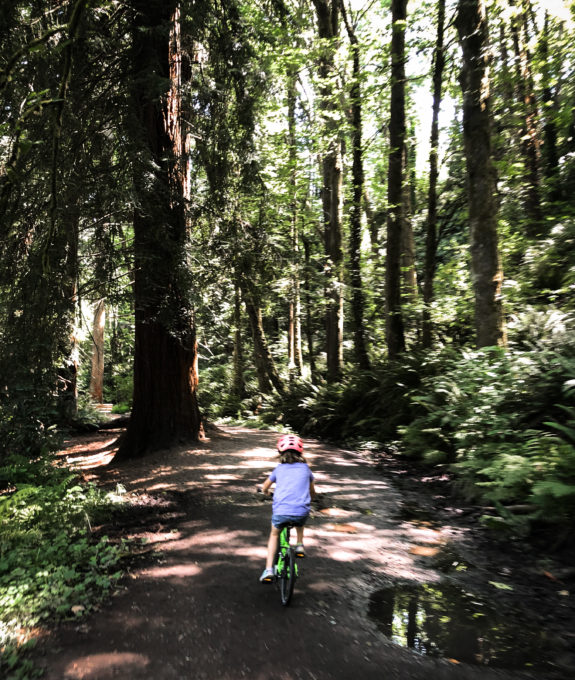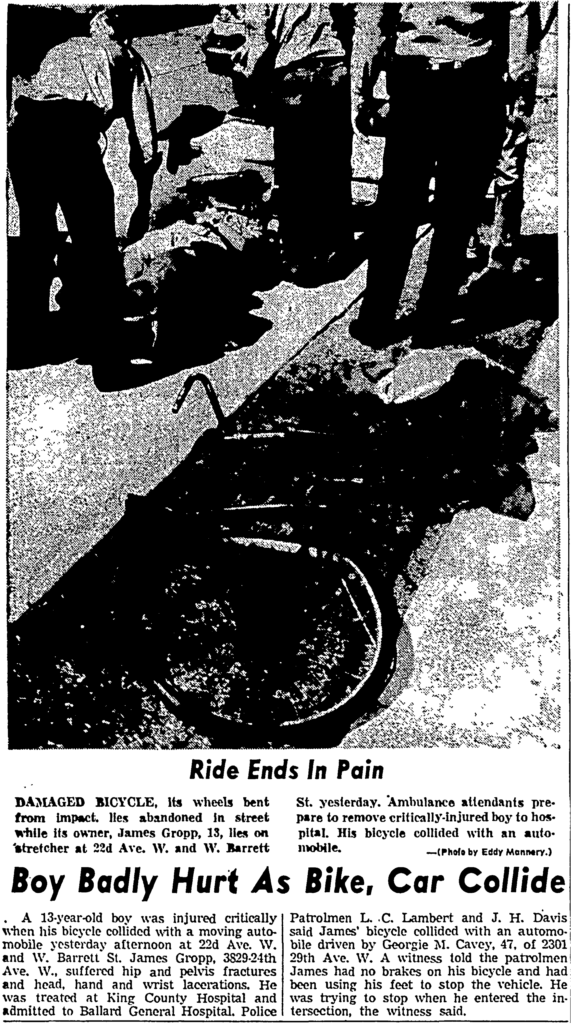CPSC should eliminate outdated child coaster brake mandate

I unfortunately missed this story before the 60-day comment period ended in late July, but as a parent of a brand new bike rider I gotta post my thoughts anyway.
There is an old Consumer Product and Safety Commission regulation that requires kids bikes to be sold with a coaster brake, and it is frankly nonsense. Makers of so-called sidewalk bikes," which the CPSC defines as bikes with a seat height no higher than 25 inches, must ship their bikes with a coaster brake even if they are designed to have perfectly capable handbrakes. Some bike makers have even resorted to shipping their bikes with three wheels: One for the front, one for the back, and one with a legally-required coaster brake hub that is intended to be thrown in the trash. This is not a great situation for many reasons.
This is why kids bike maker woom filed a request in 2022 to eliminate the requirement. From the rule change proposal summary:
The petition argues that this regulation for sidewalk bicycles is out of date. The petition asserts that it is hard to compare the relative safety of bicycle braking between children's bicycles with a combination of handbrakes and a footbrake to those with just handbrakes," and alleges that there is no evidence that handbrakes are less safe than the required footbrakes-and may be safer than footbrakes. The request also asserts that manufacturers are producing and selling non-compliant children's bicycles without footbrakes. The petition claims that footbrakes cost more to produce than handbrakes, putting manufacturers that comply with CPSC's brake regulations at a competitive disadvantage to those who do not comply. The petition also states that European regulations do not require footbrakes for children's bicycles.
My kid started by riding a balance bike, and her first pedal bike had hand brakes and no coaster brake. She never had any trouble operating the hand brakes. After riding for a while, we got her a new bike that was unfortunately just barely too big for her to ride comfortably. So we ended up borrowing a bike from a friend (thanks Lindsey!) that was a little smaller just so she'd have something to ride until she grew another inch or so. This borrowed bike had a coaster brake, and boy did it give my child trouble. The biggest problem with coaster brakes is that she had a lot more trouble getting the pedals into the starting position" because she couldn't move them backwards until they were in the right spot. This was very frustrating to her. Getting started is by far the most difficult part of learning to bike. It's the final puzzle kids have to overcome before they are riding freely. Any impediment to getting their pedals in the starting position just makes learning to ride harder than it already is.
There are also a lot of kids who learn to bike in a mountain biking or off-road setting, and maintaining a level foot position to avoid pedal strikes on uneven terrain is a vital mountain biking skill that requires riders to be able to move their pedals backwards.
 From the August 6, 1959, Seattle Post-Intelligencer.
From the August 6, 1959, Seattle Post-Intelligencer.I do understand how this rule originated, though. In researching my book Biking Uphill in the Rain: The Story of Seattle from behind the Handlebars (releasing 7 p.m. August 28 at Elliott Bay Books), I came across a horrible 1959 story that was emblematic of biking danger in the middle of the 20th Century. A 13-year-old kid got going too fast down W Barrett Street in Magnolia and was trying to drag his feet on the ground to slow down. He was unable to stop before entering the intersection at 22nd Avenue W and collided with someone driving a car. He was severely injured. The kid's bike reportedly did not have brakes, which was common at that time especially if kids were given older hand-me-down bikes. Most early bikes were fixed-gear bikes in which the rear wheel and pedals turn together. Riders on fixed-gear bikes speed up and slow down by changing the rate of their pedaling. The problem is that doing so properly, especially down steep hills, requires strength and skill. And if riders take their feet off the pedals either on purpose or accident, they can start spinning freely too quickly to be able to regain control. Additionally, early styles of hand brakes were less effective and reliable compared to modern brakes.
So you can see how, at that time, a consumer protection agency would rightfully want to mandate that every bike sold to a child was equipped with a brake that was reliable and that a person of any strength or skill could use. Coaster brakes fit the bill. But it is now 2023, and many decades of refinement have led to brake options as good or better than coaster brakes. Requiring coaster brakes specifically was probably the wrong way to achieve the goal. It would be better to spell out the necessary behavior of a braking system, leaving the exact design up to bike makers. Washington State's bicycle braking law, for example, requires that every bicycle shall be equipped with a brake which will enable the operator to make the braked wheels skid on dry, level, clean pavement." If the CSPC decides it wants to maintain a braking regulation, perhaps similar language could be used.
The biggest benefit of coaster brakes is that they require practically no maintenance. Long-term reliability is particularly important on a kids bike because you can't reasonably place the responsibility for monitoring it for maintenance needs on a child and parents are unlikely to check regularly. However, while coaster brakes themselves don't require maintenance, chains do. And when a rusty chain breaks, a bike that only has a coaster brake no longer has any brakes. This is not hypothetical, it happened to me once when I was a kid while I was trying to make super long skids. Luckily, I was able to drag my feet to stop and was not hurt, but it was a dangerous situation. With hand brakes, at least there are two sets of brakes, providing redundancy. Perhaps there's a way to make sure rim brake pads are of standard size (so replacements are easily acquired) or made from appropriately durable material that last a long time (some very cheap pads wear quickly). I'm not sure if such rules are necessary, but it's possibly worth considering if maintenance is a concern.
Anyway, I hope that the CPSC makes a good decision here that makes quality children's bikes more affordable and less wasteful.